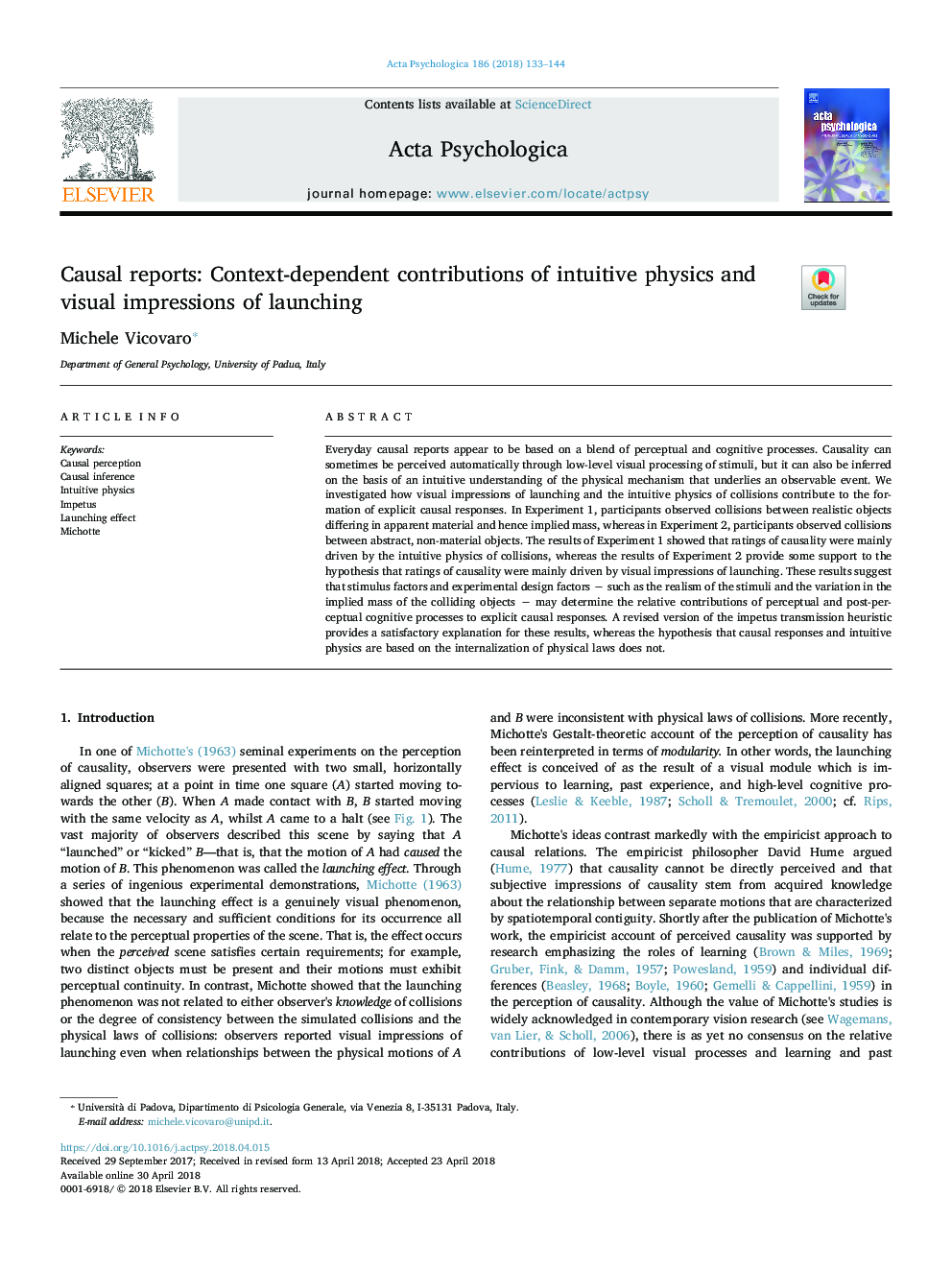| Article ID | Journal | Published Year | Pages | File Type |
|---|---|---|---|---|
| 7276743 | Acta Psychologica | 2018 | 12 Pages |
Abstract
Everyday causal reports appear to be based on a blend of perceptual and cognitive processes. Causality can sometimes be perceived automatically through low-level visual processing of stimuli, but it can also be inferred on the basis of an intuitive understanding of the physical mechanism that underlies an observable event. We investigated how visual impressions of launching and the intuitive physics of collisions contribute to the formation of explicit causal responses. In Experiment 1, participants observed collisions between realistic objects differing in apparent material and hence implied mass, whereas in Experiment 2, participants observed collisions between abstract, non-material objects. The results of Experiment 1 showed that ratings of causality were mainly driven by the intuitive physics of collisions, whereas the results of Experiment 2 provide some support to the hypothesis that ratings of causality were mainly driven by visual impressions of launching. These results suggest that stimulus factors and experimental design factors â such as the realism of the stimuli and the variation in the implied mass of the colliding objects â may determine the relative contributions of perceptual and post-perceptual cognitive processes to explicit causal responses. A revised version of the impetus transmission heuristic provides a satisfactory explanation for these results, whereas the hypothesis that causal responses and intuitive physics are based on the internalization of physical laws does not.
Related Topics
Life Sciences
Neuroscience
Cognitive Neuroscience
Authors
Michele Vicovaro,
